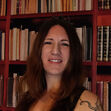Kathryn Nelson's Blog
November 7, 2022
Earth Goddess
I write honest fantasy. Honest fantasy is about real people in fantasy worlds who are relatable, who in their alien place can reveal to us truths about our own place. I use magic, fantastical creatures and imagined worlds to explore subjects close to home.
These fantasy worlds are based on our own familiar Earth. There’s horses and cake, swords and palaces. Sometimes I need to do some research into history, physics, engineering or biology in order to anchor my fiction in facts. This blog series is a peak into the varied and fascinating research which enhances my work. Some might call it procrastination, I call it fantasy facts.
In the Ethra Born series, the priestesses believe in a Goddess called Ethra. She is the sacred spirit of the world with a bountiful and generous nature. As High Priestess Shang-Lae says, “When each of us is born, a part of Her spirit is born with us and when we die, that part of us is returned to the Goddess”. Therefore, everyone is connected through the part of us that is Ethra’s.
The priestesses are healers, revering life. They know that everyone is as sacred as Ethra. They know that the actions we engage in, the choices we make, our intentions and purpose, matter on a divine level. Whatever we do during our lives, we take with us when we return to the Goddess, changing Her, affecting everything She is connected with.
Lowenna is Ethra Born, a rare individual who appears human but is actually a spirit born directly from the Goddess. Lowenna can directly access the wellspring of divine power. Just like nature, she can heal and grow or she could choose to destroy and injure. Her upbringing as a healer and priestess urges her to be a nurturing pacifist but the nightmares which have haunted her her entire life, show her a different path. The dreams are snapshots of other people’s lives, emotionally charged, from their most desperate, passionate moments. Connected so closely to the Goddess, Lowenna experiences these immersive visions from the life-fragments that Ethra holds.
The concept of the deification of the Earth can be traced back through many civilisations. Most commonly it is a female deity, although Egyptian mythology is an exception, having an Earth god. In Greek mythology, the Earth goddess is called Gaia, corresponding with the Roman, Terra. Gaia is considered to be the primordial mother of all life. In Celtic religion, the Earth mother goddess is called Danu. In Viking culture, her name is Joro. Around the world, she is known as Pachamama, Houtu, Papatūanuku and many others.
These Earth goddesses personify the bounty of nature, as well as representing motherhood and fertility. Often, they hold the power of both creation and destruction. As Shang-Lae said, we are born from the Goddess and it is to Her we return when we die.
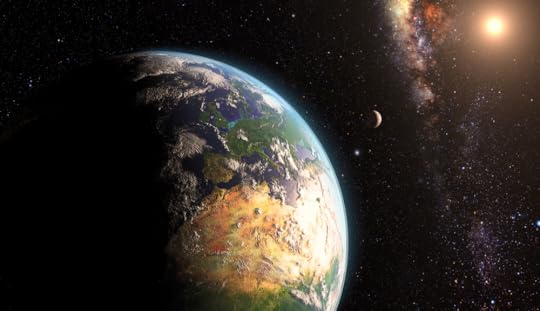
October 3, 2022
Walking
I write honest fantasy. Honest fantasy is about real people in fantasy worlds who are relatable, who in their alien place can reveal to us truths about our own place. I use magic, fantastical creatures and imagined worlds to explore subjects close to home.
These fantasy worlds are based on our own familiar Earth. There’s horses and cake, swords and palaces. Sometimes I need to do some research into history, physics, engineering or biology in order to anchor my fiction in facts. This blog series is a peak into the varied and fascinating research which enhances my work. Some might call it procrastination, I call it fantasy facts.
A human can cover about 20 miles (32 km) per day if they’re walking. That’s an average speed of 2 miles per hour over ten hours. It would depend on the terrain and the roads, and whether you need to hunt for food along the way. I think 12 miles per day (19km) would be reasonable if you were hiding from the King’s Watch, taking it in turns to sleep, gathering food and avoiding habitation whilst travelling. That is if you needed to maintain that pace over a number of days. If you were in a hurry, a fast walk would carry you further than running. An average of 3 mph over 14 hours would take you 42 miles (68 km) but you’d be pretty tired the next day, even if you were reasonably fit.
If you had a horse, you could travel up to 100 miles (160 km) in a day, if was a fit horse and had plenty of rest afterward. Most horses can gallop at 30 mph (48 kph) but only for about 2 miles (3 km). A horse walking at a steady pace could cover 30 miles (48 km) in a day, consistently over a number of days.
If you had a horse and cart, that would be slower than riding. It would depend on the road conditions, the weather and the load in the cart or carriage. Fast mail coaches which changed teams of horses every ten miles (16 km), could cover over 100 miles (160km) in a day. Whereas, a heavily laden cart on a muddy road in the mountains might travel no more than 4 miles (6.4 km) in a day.
Of course, if you were an elf riding a sleipnir or a dwarf on a chariot pulled by a pack of fenrir, you would have to adjust these calculations somewhat.

September 5, 2022
Horses
I write honest fantasy. Honest fantasy is about real people in fantasy worlds who are relatable, who in their alien place can reveal to us truths about our own place. I use magic, fantastical creatures and imagined worlds to explore subjects close to home.
These fantasy worlds are based on our own familiar Earth. There’s horses and cake, swords and palaces. Sometimes I need to do some research into history, physics, engineering or biology in order to anchor my fiction in facts. This blog series is a peak into the varied and fascinating research which enhances my work. Some might call it procrastination, I call it fantasy facts.
Horses sweat.
They are one of only a few furred mammals which sweat for thermoregulation. The fur can trap the moisture and reduce the effectiveness of evaporative cooling. However, horses produce a protein when sweating which creates a lather. A surfactant in the lather reduces friction and helps shed moisture, making sweating more effective.
Horses sweat twice as much as humans, per area of skin. They can lose 15 litres of water per hour during strenuous exercise in hot weather which can be 2-3% of their body weight. They not only lose water, risking dehydration, but they also lose electrolytes, particularly sodium, as well as potassium, calcium and magnesium. A reduction in these essential minerals can lead to dizziness, loss of consciousness, and even death.
A dehydrated horse can appear lethargic and off its food. If you gently pinch the skin on a horse’s neck so it forms a tent shape, it should return to flat immediately. If it takes more than a couple of seconds, then the horse is dehydrated. You can also check their gums which should be a healthy pink colour. Lightly press your finger against the gum and if it takes more than couple of seconds for blood to refill the area, the horse is dehydrated.
Offer the horse plenty of fresh water in a cool, shady area. Rinse the horse with water but scrape off the water afterwards, so it doesn’t inhibit sweating.
If you’re fleeing across country to escape a band of orcs or to deliver a dire message to the king, remember to not push your horse too hard. Take regular breaks and drink plenty of water. You’ll be in trouble if your horse collapses from exhaustion or dehydration before you make it to the city.
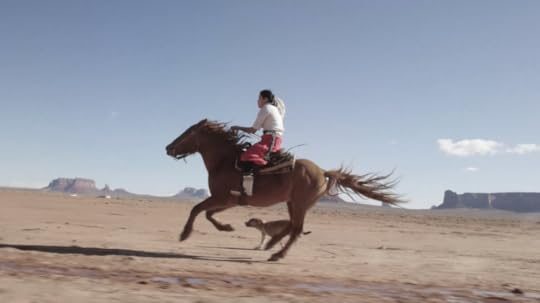
August 8, 2022
Hawks
I write honest fantasy. Honest fantasy is about real people in fantasy worlds who are relatable, who in their alien place can reveal to us truths about our own place. I use magic, fantastical creatures and imagined worlds to explore subjects close to home.
These fantasy worlds are based on our own familiar Earth. There’s horses and cake, swords and palaces. Sometimes I need to do some research into history, physics, engineering or biology in order to anchor my fiction in facts. This blog series is a peak into the varied and fascinating research which enhances my work. Some might call it procrastination, I call it fantasy facts.
Hawks are birds of prey in the Accipitridae family, although the term hawk is often used where it reflects a common term rather than strict taxonomy.
The peregrine falcon is the fastest animal in the world, reaching speeds of over 200 miles per hour (320 kph) during a hunting dive. Flying horizontally, hawks more typically travel at 30-50 mph (48-80 kph). They can fly 200-300 miles per day (322-483 km) when migrating, covering thousands of miles each year.
When migrating or searching for prey, hawks can reach altitudes of 15,000 feet (4,572 metres), though the Ruppell’s vulture has been recorded up at 37,000 feet (11,278 m), as high as commercial aeroplanes. At an altitude of 15,000 feet (4,572m), the oxygen content of the air is half that at sea level. At an altitude of 30,000 feet (9,144 m), the temperature can be as low as -45C (-48F). Birds have specially adapted lungs, blood and feathers to allow them to fly at these altitudes.
Hawks have excellent eyesight, capable of seeing not only the visible light range – like humans – but also ultraviolet light, as well as detecting polarised light and magnetic fields. They have five times as many photoreceptors per area of their retinas, compared to humans. They also have excellent hearing.
When you shapeshift into your hawk form, you may be disorientated for a few moments. Take the time to adjust before flying and don’t fly too far, even if you are trying to escape a shipwreck or looking for the secret enemy base.
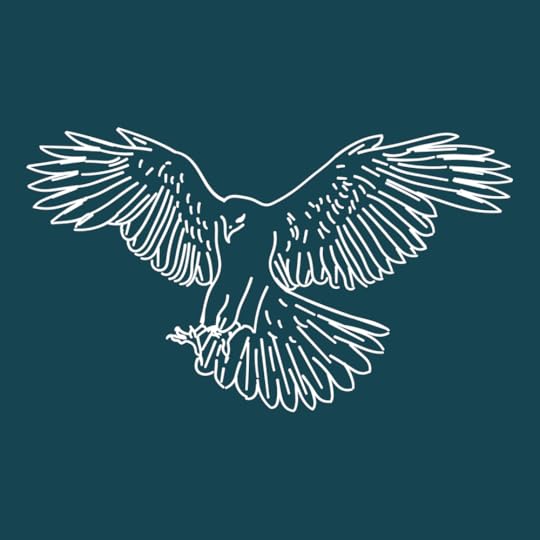
July 8, 2022
Drowning Deceit published!
I was planning on writing this monthly blog post last Sunday (my posting schedule is the first Sunday of every month) but I've been so busy with the final preparations for publishing Drowning Deceit that I'm only getting round to writing this now, on the very day Drowning Deceit is published.
Drowning Deceit is the fourth and final book in the Ethra Born series, the culmination over over a decade of work. I feel that I've developed as an author during this process and am so grateful for all that I've learnt along the way. In this pivotal moment, I look back over the journey so far, as well as ahead to the stories which are going to be forthcoming.
In the Ethra Born series, Lowenna is a healer priestess who has vivid dreams which connect her to Ethra, the world's spirit. Lowenna is Ethra born. Yet she fears her power almost as much as she fears those who would annihilate all she holds sacred. Her daughter, too, has unusual abilities. Hope embodies her namesake. She offers hope to those in pain, who are suffering and alone. Yet not everyone welcomes her help. She must learn to trust those who will help her in return. She must come to realise that not everyone can be saved. In a world of magic and monsters, Lowenna and Hope are forced to understand their powers before their powers are used against them.
Their adventure starts in Gathering Darkness where Lowenna meets Theo and she comes to realise who who truly is. This is also the start of Hope's journey as she is born into a tumultuous world. A decade later, in Strengthening Spirit, Lowenna is forced to embrace her powers, with Theo and Hope desperate to help her as her life hangs in the balance. In Risking Honesty, Hope embarks on her own adventure, aiding the mysterious messenger, Harrison, as they evade the King's Watch after being falsely accused. Finally, in Drowning Deceit, Hope risks everything to aid her friend and is forced to make a decision which will change her life forever.
This is the end of the Ethra Born series. (For now. I have some ideas for a follow on series but it's too soon to share the details.) In the meantime, I have been working on another series, set in the same world but a hundred years earlier. In the Ethra Born books, Theo talks about his great-grandparents, the legendary Jossryn Hawk and Siria Fey, and it is their adventures which we will be exploring in the next series.
Until then, thank you for reading the Ethra Born series. Please do leave a review. I am so grateful for your support. I wouldn't be able to do this amazing job without you. Thank you.
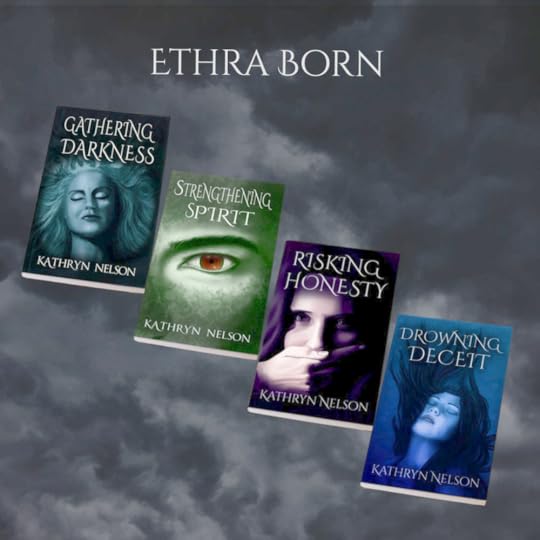
June 6, 2022
Drowning Deceit excerpt
Drowning Deceit will be published on 8th July. Here is a sneaky peak at an excerpt from chapter one:
As Falchar neared his family home, he saw a cart driving away and a small hunched figure making their slow way across the yard in front of the house. Hurrying over, he saw it was an elderly woman, a shawl wrapped around her head.
“Here, grandmother, let me lend you my arm,” he said in Pinnate.
She startled at his voice but wrapped her hand around his arm without looking up and leant a little on him.
“Graci,” she thanked him in a scratchy voice.
“What brings you to the Duoradofalco house?”
“I have a message from your uncle,” she replied in Pinnate with only a hint of a mainland accent.
“Come in, then. Let me fetch you some tea and you can tell me everything.”
He ushered her through the front door and into the sitting room. His housekeeper appeared at the door as he was helping the woman into a chair.
“Tea and refreshments, please, Luci,” Falchar instructed her.
She nodded acknowledgement and disappeared out of the room. Falchar lit the lamps and settled into the chair opposite his guest.
“What’s your name?” he managed to ask before all the air left his lungs and his throat closed.
The woman’s face was shadowed by her shawl and lined with age but he would know those eyes anywhere.
“Hope,” he whispered.
She was stopped from replying by Luci bustling into the room with a tray full of tea, cups, plates, cake and fruit. Falchar could not look away from Hope. Luci closed the door behind her and Hope pushed the shawl away from her face, exposing her glossy black hair. The disguise was a good one and the way she had moved had fooled even him.
“Harrison.”
His name sounded strange from her lips. No one had called him that in a long time.
“Falchar,” she amended. “Are you well?” She spoke in the common language.
“Yes.” He cleared his throat. “Yes. It’s good to see you. I had hoped-“
She held up a hand to forestall his words.
“I do truly carry a message from your uncle. It’s Ryden. He’s missing. That’s why I’m here.”
Falchar sat back in his chair. The way she spoke his cousin’s name, the pinched look of worry around her eyes, her reason for visiting, all combined to cause an icy wash of dread.
“Please, Harrison, I need your help.”
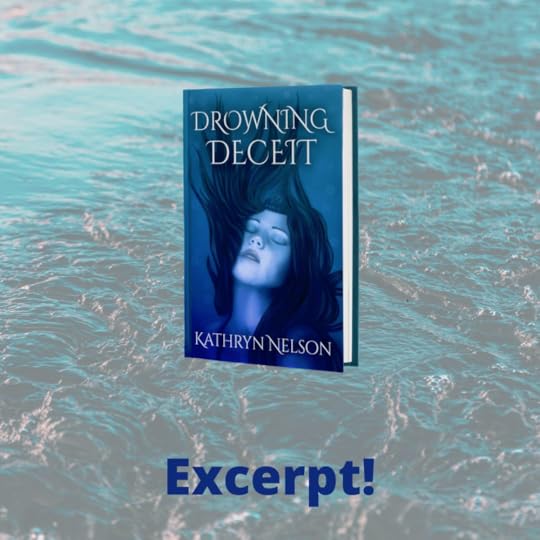
May 2, 2022
Drowning Deceit
When I started writing the first book in the Ethra Born series, Gathering Darkness, I didn’t imagine that I would be here now on the cusp of publishing the fourth book, Drowning Deceit. Partly because I was planning on the series being a trilogy. But when I came to the end of writing book 3, Risking Honesty, I just knew that there was another story that needed to be told. Hope needed a happy ending. We needed to find out more about the mysterious Harrison, or is it Falchar?
At the end of Risking Honesty, Hope walks away from him and returns home. In Drowning Deceit, events turn her back towards the Pinnate Isles. There, she will face challenges which test her to her core, make her question everything she believes to be true and forces her to make choices which will change the world forever. Will she be able to find the happy ending she’s been looking for?
Drowning Deceit is immersed in layers of secrets. It's the untruths we tell to others and whisper to ourselves. It’s those lies which keep us safe. It's the deceit we use to smother honesty. Falchar has reclaimed his birth name but continues to deny his heritage. Hope is a healer, a messenger, an envoy, not at all who she appears to be. In the treacherous waters of the Pinnate Isles, across the windswept islands, beneath the surface, there lurks a danger that would drown them all.
Cover art reveal and publication date announcement coming soon.
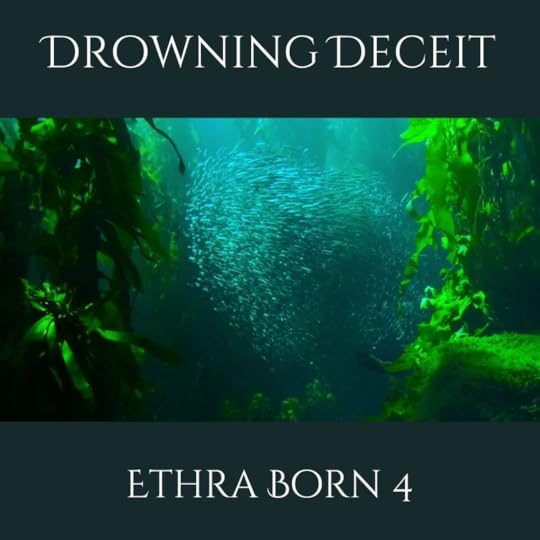
April 4, 2022
Genuine Heroines - Freya Stark
I’m a writer of honest fantasy, genuine heroines and wellness wisdom.
Genuine heroines are women who are tough, yet kind, who can rescue themselves, yet welcome the support of friends. They don’t wear bikini armour and they don’t fight hordes of baddies after three days of no sleep and no food. Inspired by genuine heroines throughout history, I write female characters with depth, complexity and passion
Therefore, I’m continuing this series of blog posts about historical female characters who I have found inspirational. There are explorers, adventurers, healers, rights activists and world changers. These are real world characters with exceptional stories that I’m excited to share with you.
This month it's Freya Stark – travel writer.
Freya Stark was born in 1893 in Paris. Her mother was of English, French, German and Polish descent and her father was an English painter. Freya spent much of her childhood in northern Italy. When she was thirteen, her hair was caught in a factory machine, ripping off her right ear and part of her scalp. Months of skin grafts left her with scars which she often covered with her hair or a hat.
When she was nine years old, she was given a copy of One Thousand and One Nights which started her interest in the Orient. Later, she studied Arabic and Persian languages at the University of London.
During World War I, Frey served with the Voluntary Aid Detachment, providing nursing care in northern Italy.
In 1927, Freya travelled to Beirut in Lebanon, then on to Baghdad in Iraq. She travelled in secret, as at that time, Lebanon and Syria were under French control with a repressive government. Despite travelling on remote roads at night, Freya and her guide were caught by French soldiers. They were released after three days of imprisonment. Freya later wrote in an English magazine about the harsh conditions for citizens in Syria.
By 1931, Freya had made three expeditions to western Iran and located the Valleys of the Assassins (Hashshashins). This was an unforgiving wilderness which no Westerner had been to before. She wrote a book about her journey and was awarded the Royal Geographical Society's Back Award.
In 1934, Freya sailed down the Red Sea, following the legendary frankincense route to the ancient city of Shabwa. However, she fell ill on route, contracting measles and dysentery, and had to be flown to a British hospital in Aden. Once she had recovered, she continued exploring the region and wrote three books about her travels, for which she received the Founder's Gold Medal of the Royal Geographical Society. She was a woman travelling alone in a region under strict religious control. A place where very few Europeans had visited, yet despite hardships, she persevered and wrote about this exotic culture with compassion and curiosity.
During the Second World War, Freya worked in Yemen, Egypt, Iraq and Palestine for the British Ministry of Information. She spread British propaganda to persuade the Arabs to support the Allies; showing films, giving speeches, arranging meetings and setting up support networks.
After the war, Freya published a volume of essays and three autobiographical volumes. In the 1950’s, she travelled around Turkey and wrote four books about her explorations. In the 1960’s, she published another autobiography, a book about the history of Rome and another collection of essays.
In 1968, aged 75, she travelled to Afghanistan, visiting the Minaret of Djam in a remote and nearly inaccessible part of the country.
When she returned to northern Italy, she continued writing about her travels. She died in 1993, aged one hundred.
Freya Stark was an inspirational woman, travelling extensively around the Middle East, facing dangerous situations and difficult conditions with bravery and aplomb. She approached her adventures with an open mind, observing without judgement and learning about new languages and cultures with enthusiasm. She inspires me to write characters who are adventurous, unafraid of stepping outside their comfort zones and being open to life’s challenges.

March 6, 2022
Genuine Heroines - Louise Arner Boyd
I’m a writer of honest fantasy, genuine heroines and wellness wisdom.
Genuine heroines are women who are tough, yet kind, who can rescue themselves, yet welcome the support of friends. They don’t wear bikini armour and they don’t fight hordes of baddies after three days of no sleep and no food. Inspired by genuine heroines throughout history, I write female characters with depth, complexity and passion
Therefore, I’m continuing this series of blog posts about historical female characters who I have found inspirational. There are explorers, adventurers, healers, rights activists and world changers. These are real world characters with exceptional stories that I’m excited to share with you.
This month it's Louise Arner Boyd - Arctic explorer
Louise was born in California in 1887. Her father was the owner of a gold mine, so Louise and her two older brothers had a privileged upbringing. Every summer, they would spend time at the family ranch, horse riding, fishing, camping and exploring. They also travelled extensively, including trips to Europe. Sadly, Louise's two brothers both died of heart disease within a few months of each other when Louise was in her teens.
After her parent’s deaths in 1919 and 1920, Louise used her inheritance to go travelling. In 1924, she journeyed to Norway and had her first experience of the polar ice pack. Enthralled, she charted a vessel to go on a hunting and filming trip in the Arctic which gained her notoriety around the world.
In 1928, she was planning another trip to the Arctic when she heard that Norwegian explorer Roald Amundsen and his team had disappeared following their attempts to find Italian explorer Umberto Nobile. Louise offered her services to the Norwegian government to help the search but despite travelling over sixteen thousand kilometres across the Arctic ocean, she found no sign of Roald Amundsen, however Umberto Nobile was rescued. Although she did not find Roald Amundsen, for her efforts, the Norwegian government awarded Louise the Chevalier Cross of the Order of Saint Olav, the first American woman to be so honoured.
In the 1930’s, Louise explored the north and east coasts of Greenland, collecting botanical samples and taking photographs. The findings from the scientific expeditions she led in 1933 and 1935 were published by the American Geographical Society.
In 1934, she spent three months travelling across the Polish countryside by car, rail, boat and on foot, recording and photographing the local customs and culture.
During World War II, her knowledge of the Arctic from her six previous expeditions put her in a position to lead a new expedition for the Department of Commerce’s National Bureau of Standards along the west coast of Greenland. The main objective was to monitor radio wave transmissions, as well as studying the ionosphere, geomagnetism and aurorae. She also worked on secret assignments for the Department of the Army and was awarded a Department of Army Certificate of Appreciation.
In 1955, Louise charted a plane and flew over the North Pole, the first woman to have done so. Her crew included Norwegian aviation pioneer Thor Solberg.
Louise was the second woman awarded the Cullum Medal of the American Geographical Society and in 1960 was the first woman to be elected to their board. She was made an honorary member of the California Academy of Science and received an honorary law degree from the University of California.
Louise died in 1972, aged eighty four. The data she collected is now helping scientists monitor climate change, as well as leaving a lasting contribution in the fields of geology, geomorphology, oceanography and botany.
Louise was an intrepid explorer, not letting misogyny stop her from following her passion. She sought out experts to help her learn botany, photography and the other skills she required for her expeditions. She used her wealth to finance scientific explorations, contributing significant information which is still valued today. Louise is an inspiration for strong female characters who follow their passions and bravely push boundaries.
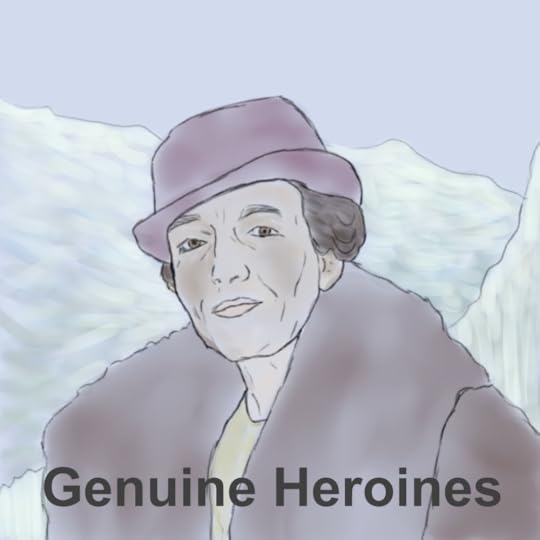
February 7, 2022
Genuine Heroines - Nellie Bly
I’m a writer of honest fantasy, genuine heroines and wellness wisdom.
Genuine heroines are women who are tough, yet kind, who can rescue themselves, yet welcome the support of friends. They don’t wear bikini armour and they don’t fight hordes of baddies after three days of no sleep and no food. Inspired by genuine heroines throughout history, I write female characters with depth, complexity and passion
Therefore, I’m continuing this series of blog posts about historical female characters who I have found inspirational. There are explorers, adventurers, healers, rights activists and world changers. These are real world characters with exceptional stories that I’m excited to share with you.
This month it's Nellie Bly - journalist and adventurer.
Nellie Bly was the pen name of Elizabeth Cochran Seaman. She was born in 1864 in Pennsylvania. Her father, Michael, owned a mill and was the son of an Irish immigrant. Michael had ten children with his first wife and five children, including Nellie, with his second wife.
In 1880, the family moved to Pittsburg. There, Nellie read an article in the Pittsburg Dispatch which stated that women were only good for birthing children and keeping house. Incensed, Nellie wrote a response refuting those claims. Impressed by her writing, the editor offered her the chance to write an article, in which she discussed the impact of divorce on women. The editor then offered her a full time job and chose the pen name Nellie Bly after the song by Stephen Foster.
Nellie wrote articles about working women and their plight in factories, however, after the newspaper received complaints from factory owners, she was reassigned to cover stories on fashion and gardening. Dissatisfied, she travelled to Mexico and spent six months as a foreign correspondent.
In 1887, Nellie moved to New York and took an undercover assignment with the New York World. She had herself committed to the Women's Lunatic Asylum on Blackwell's Island and spent ten days investigating the terrible conditions there. Her findings led to improvements within the asylum and brought about reforms. In addition, her work shed light on the lives of marginalised women, changing the social attitudes of the time.
In 1889, Nellie set off from New York in the first ever attempt to break the fictional record set in the book Around the World in Eighty Days by Jules Verne. She took only a small bag containing a change of underwear and toiletries, and a purse tied around her neck. Travelling most of the way by herself, using steamships and railways, she travelled to England, then France, and through Europe and Asia. After crossing the Pacific, she landed in San Francisco, before taking a train back to New York. After covering over forty thousand kilometres, she completed her journey in seventy two days, setting a new world record.
Between 1889 and 1895, Nellie wrote eleven novels for the New York Family Story Paper which printed a chapter each week.
In 1895, Nellie married Robert Seaman who was head of the Iron Clad Manufacturing Company. When they married, Nellie was thirty one and Robert was seventy three years old. After Robert died in 1904, Nellie took over the running of the company, ensuring there was good social welfare, including health benefits and recreational facilities, for employees. The company made milk cans, boilers and oil drums. Nellie herself invented and patented a novel milk can and a stacking rubbish bin. She was a leading female industrialist in her day but embezzlement by a manager and poor financial governance led to the company going bankrupt.
During World War 1, Nellie reported on the events on Europe’s Eastern Front and was the first woman to visit the war zone between Serbia and Austria. She also reported on the Woman Suffrage movement, continuing her efforts to bring to light women’s struggles.
Nellie died of pneumonia in 1922, aged fifty seven.
Nellie Bly led an incredible life, travelling the world and speaking out for women’s rights. I’m writing a story at the moment about Theo’s great-grandparents, Siria and Jossryn. Like Nellie, Siria is championing social reform and giving marginalised women a voice. Nellie inspires me to write strong female characters who stand up for what they believe in.


